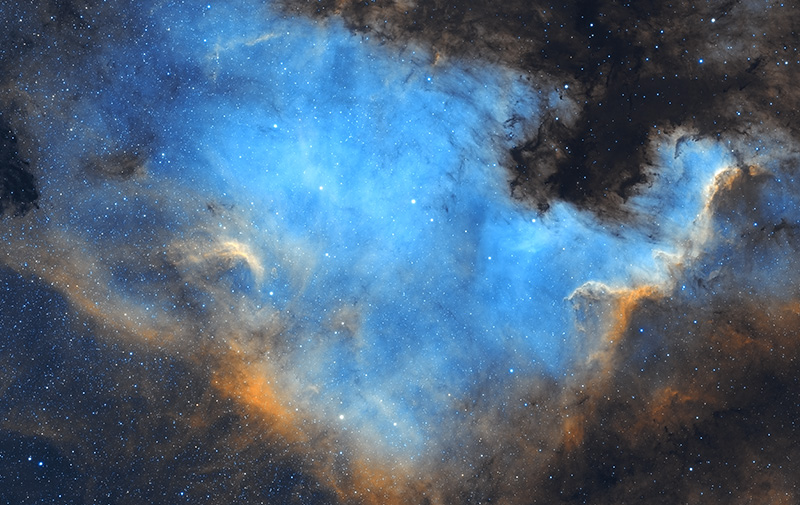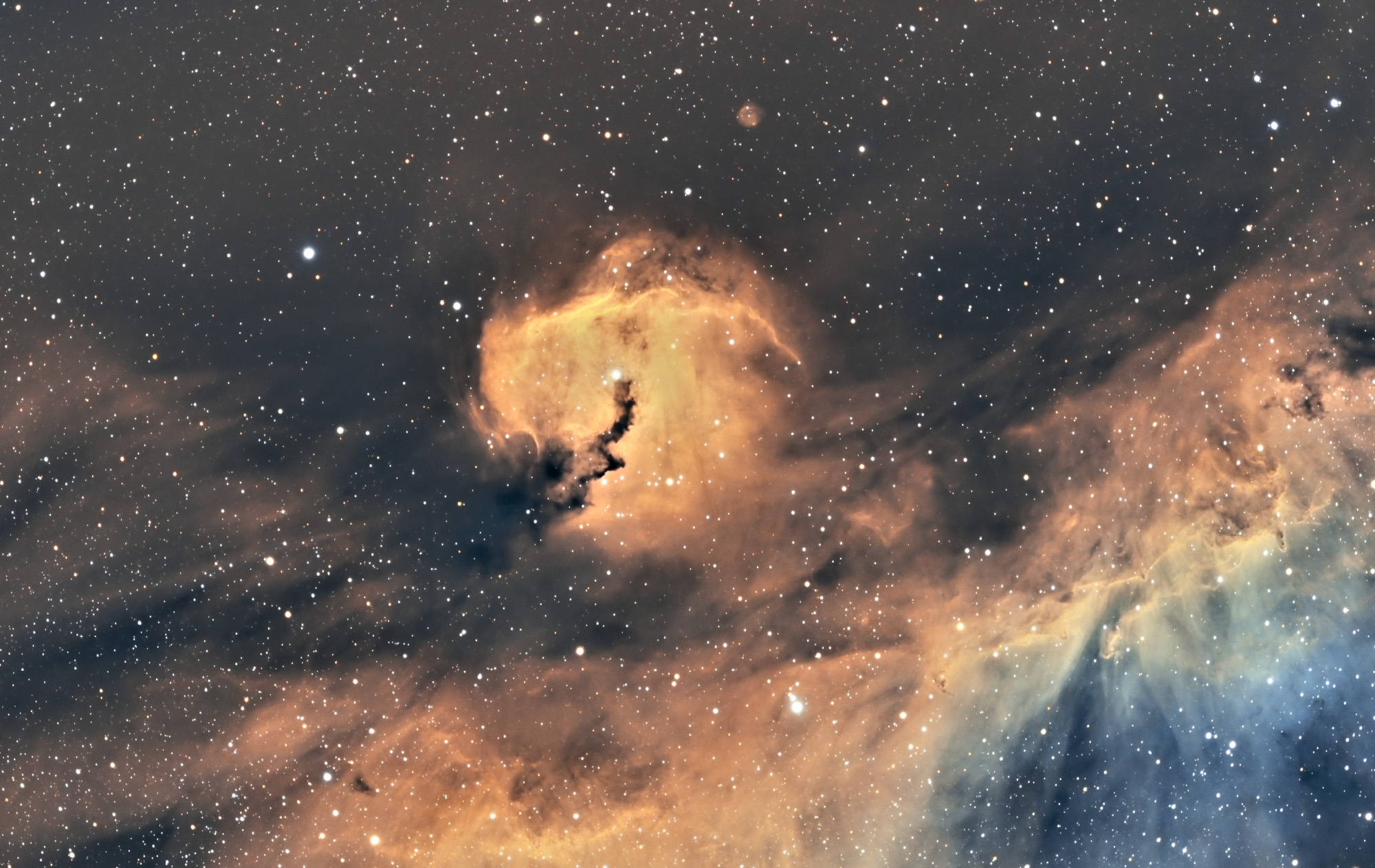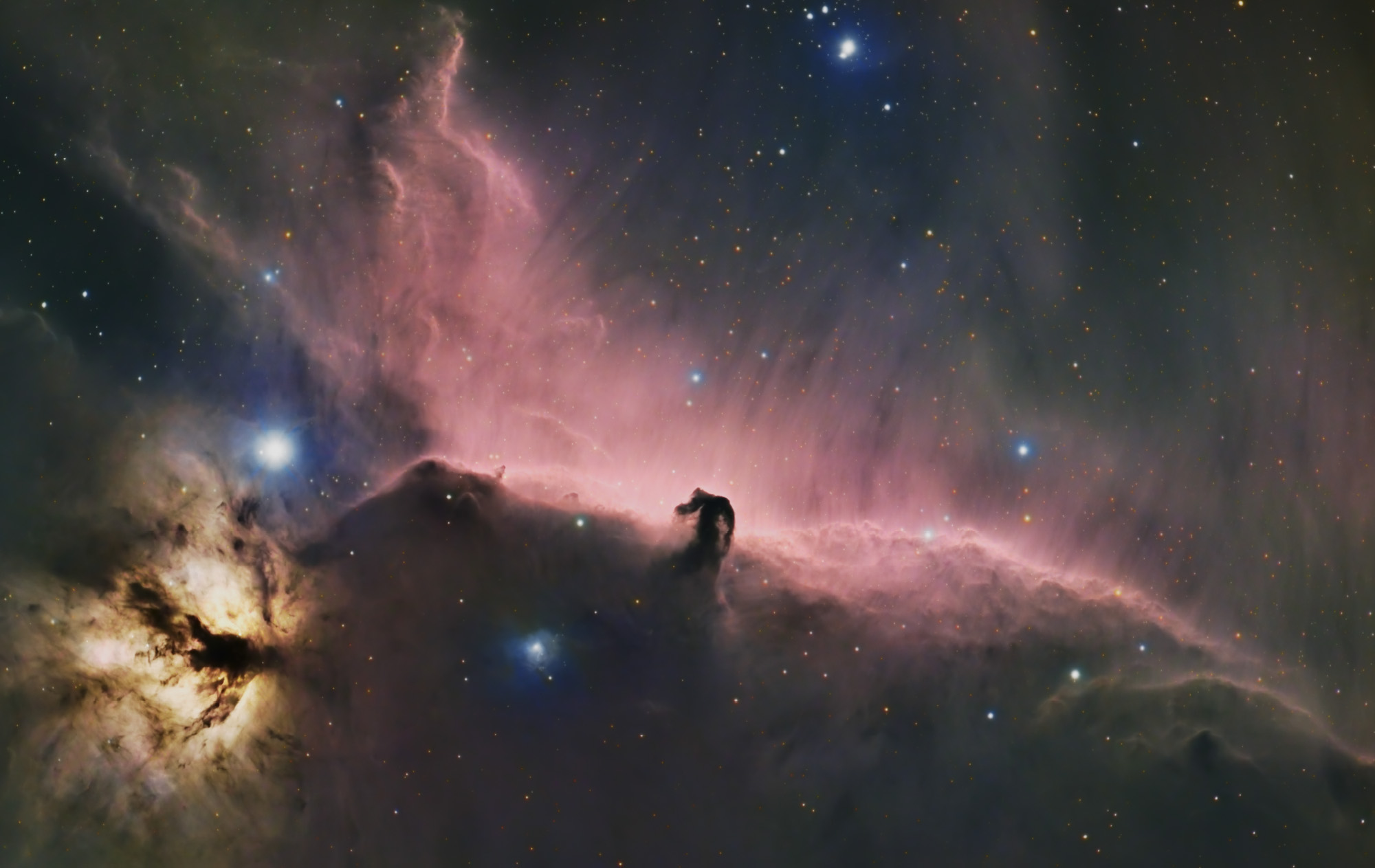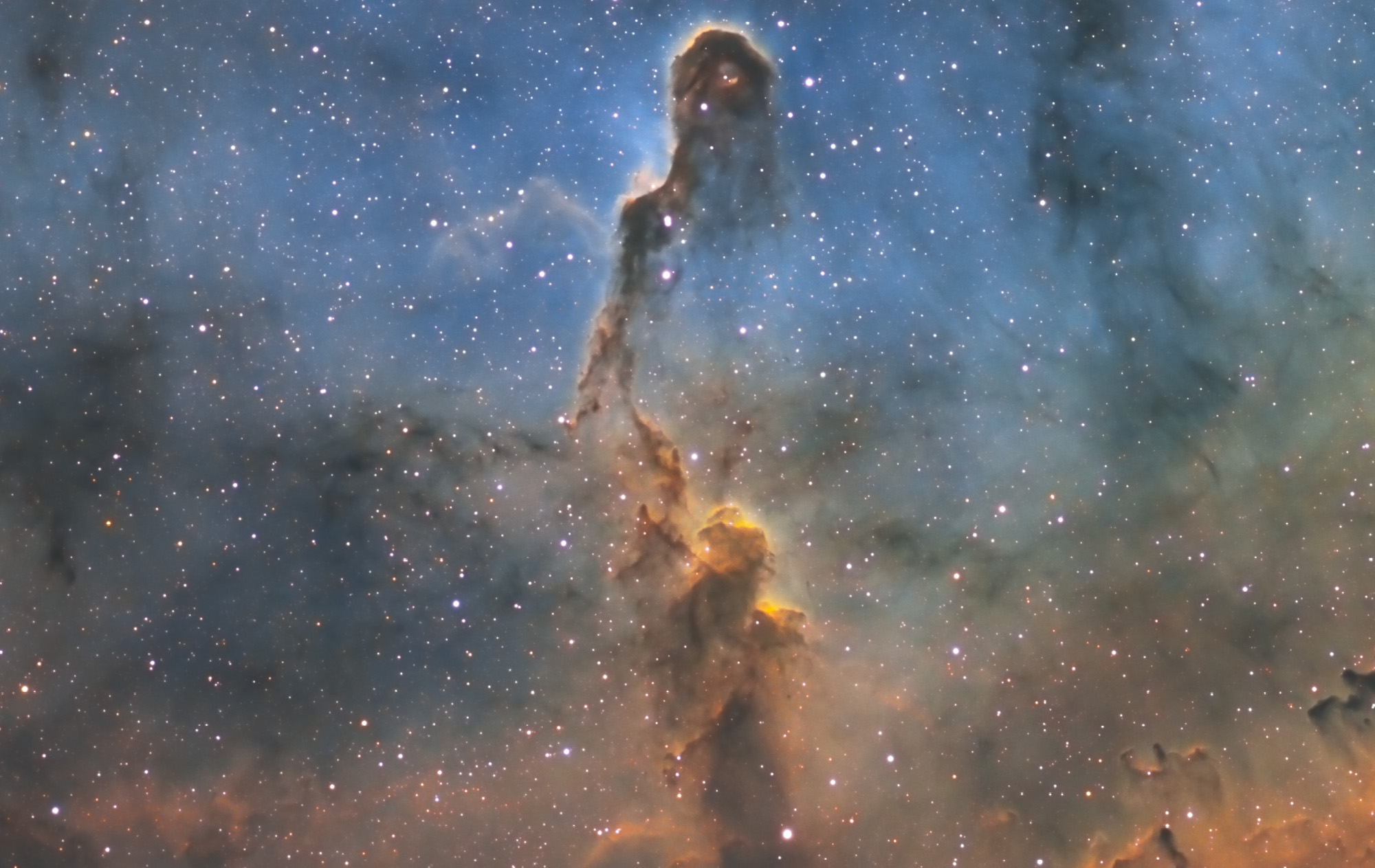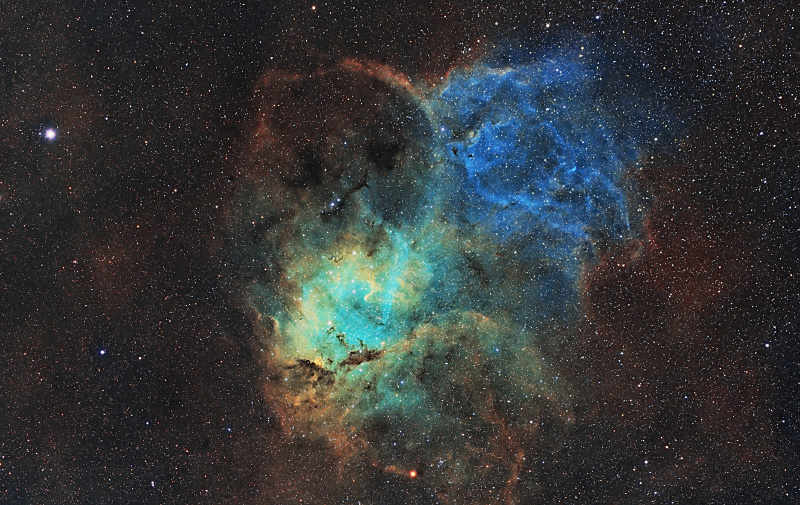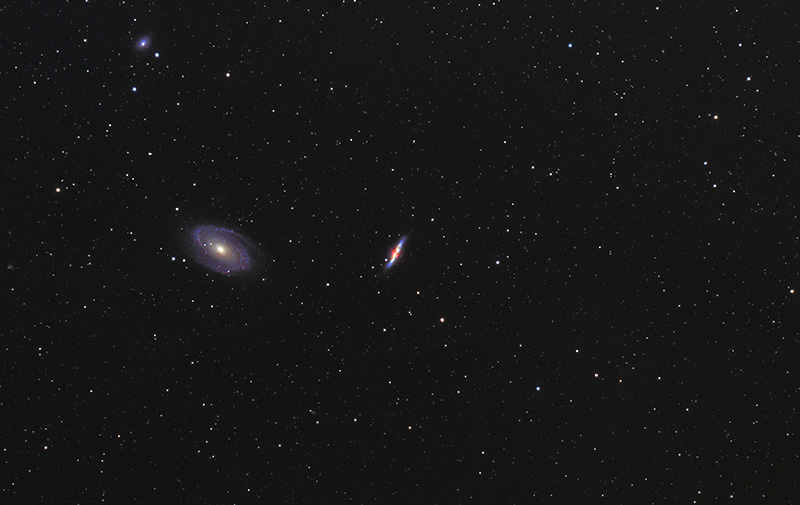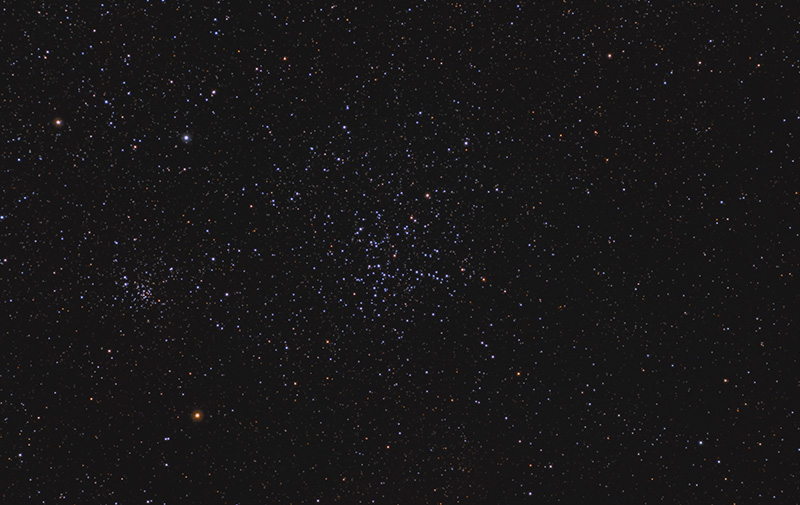North America Nebula
Object: NGC 7000 The North America Nebula
Description: NGC 7000 is a giant emission nebula in the constellation of Cygnus that spans 120 x 100 arc minutes of apparent sky. It’s one of a number of low surface brightness nebulae surrounding the first magnitude star, Deneb (α Cyg – mag. +1.25). Under dark skies this object can be spotted with the naked eye, appearing as a faint hazy patch of light although even the smallest amount of light pollution renders it invisible. The integrated magnitude of NGC 7000 is probably about +4.5. However, this is misleading due its large size and some parts of the nebula shine no brighter than 12th magnitude. When photographed or imaged, NGC 7000 bears a striking resemblance to the North American continent, hence its nickname “the North America Nebula ”. NGC 7000 was discovered by William Herschel on October 24, 1786 and first photographed by Max Wolf on December 12, 1890. It is 1,600 light-years away and best seen from northern latitudes during the months of July, August and September.
TECH SPECS
Rights Statement: Copyright, Julio Encarnacion, 2022
Acquisition Dates: 05/29/22; 05/30/22; 06/03/22; 06/05/22
Published Date: June 6, 2022
Location: Driveway, Land o Lakes, Florida.
Optics:Takahashi FSQ-85EDX f/5.3 Petzval Refracting Telescope
Mount: Sky-Watcher EQ6-R Pro
Camera: ZWO ASI2600MM Pro (mono)
Filters: Astrodon – Ha (5nm); SII (3nm); OIII (3nm)
Guiding: William Optics 50mm Uniguide and ZWO ASI290MM Mini (mono)
Gain: 100
Cooling: -14c
Integration: Total Time: 16.5 hours; Ha (119×300”); SII (51X300”); OII
Software: Mount Control: EQMOD; Acquisition, Guiding, Polar Alignment: ZWO ASIAIR Plus; Processing: Pixinisght 1.8.9 and Adobe Photoshop

